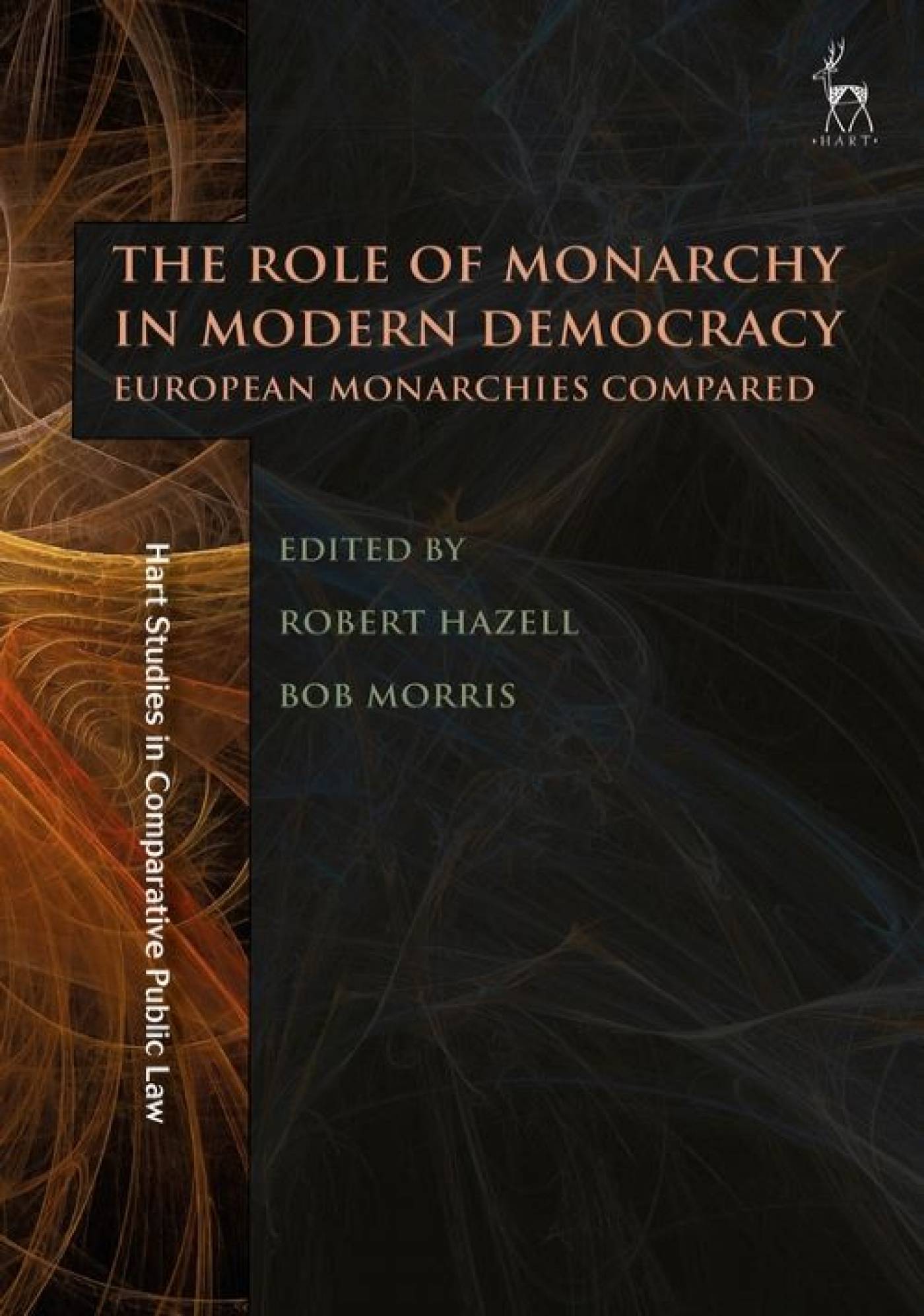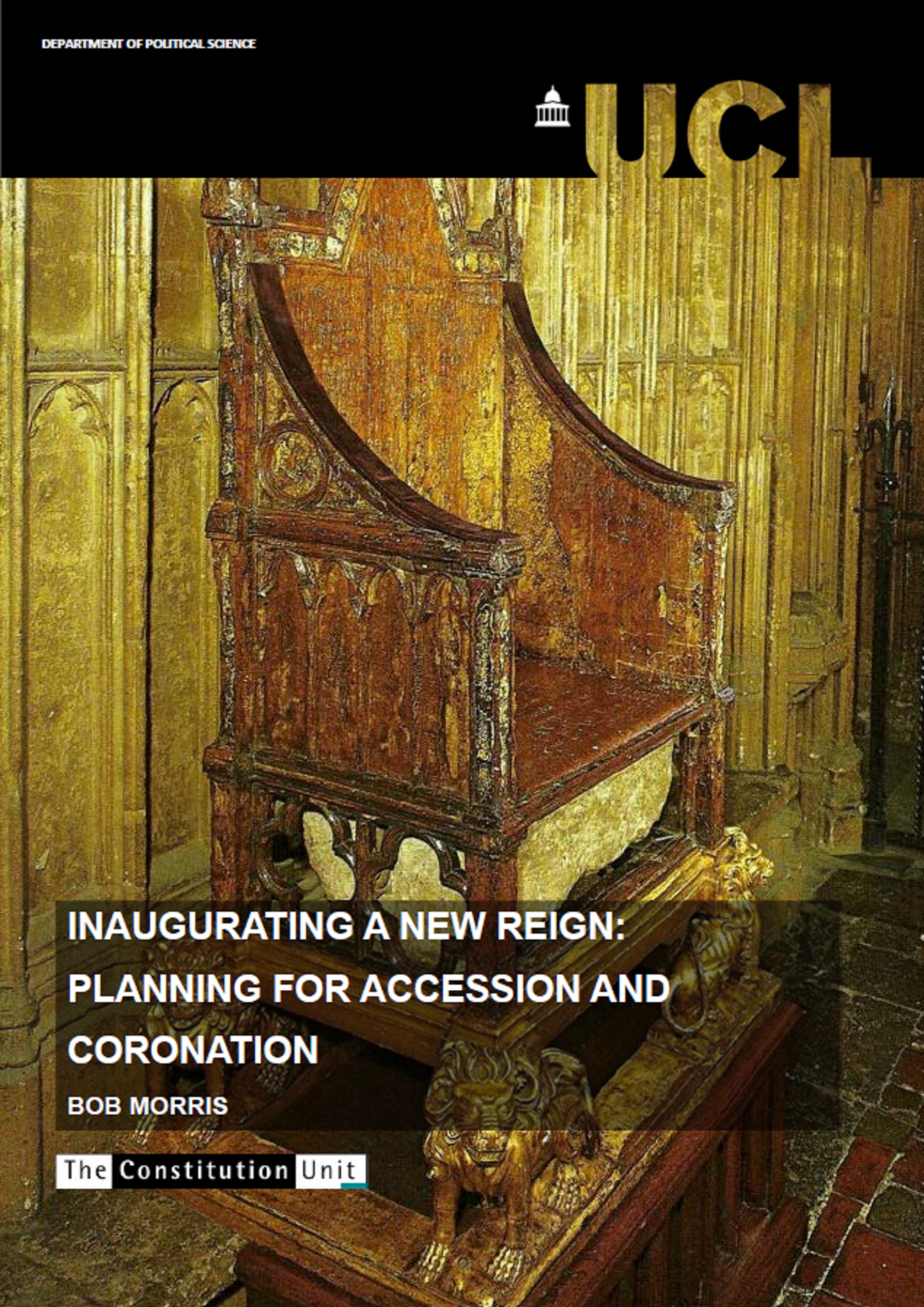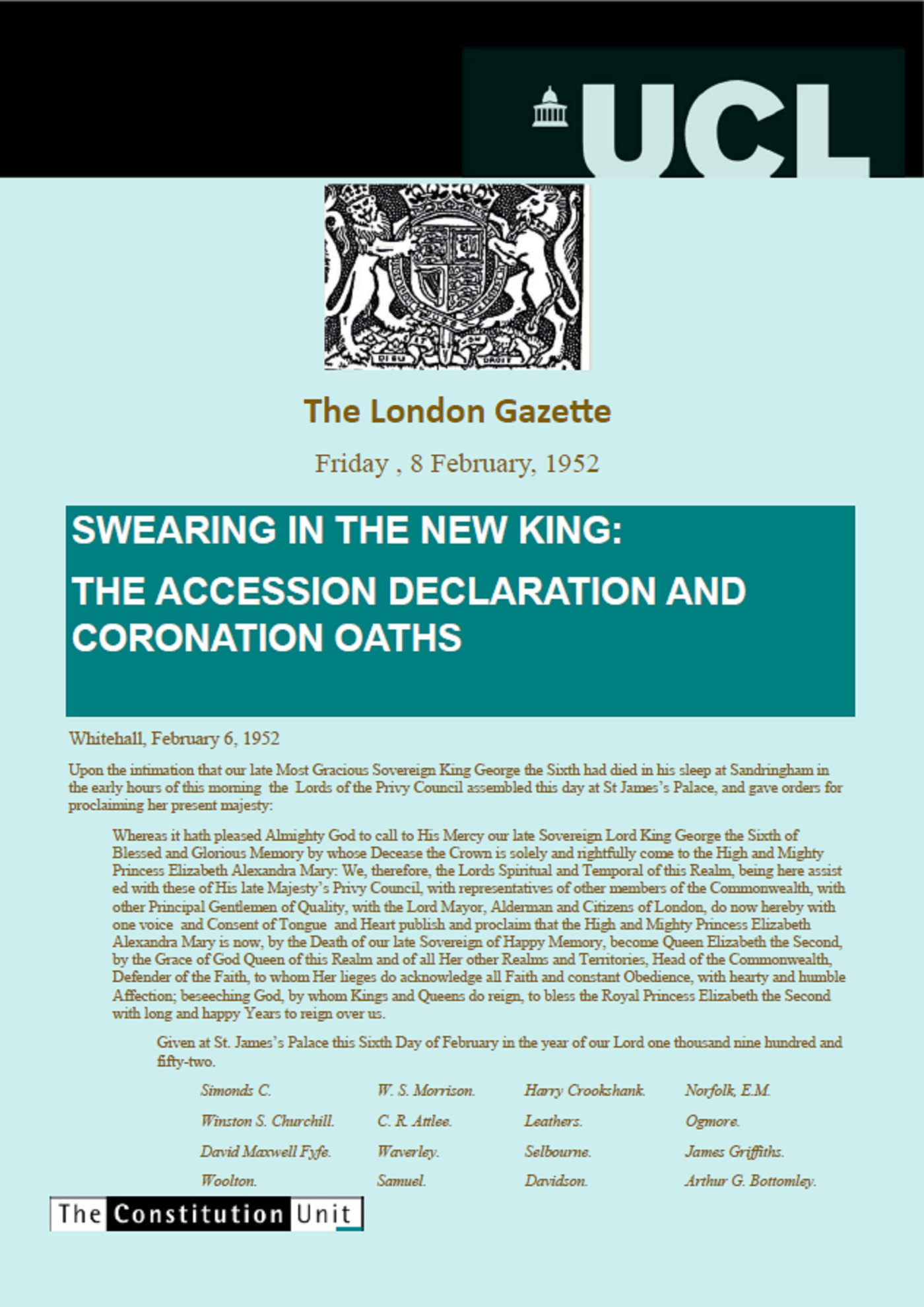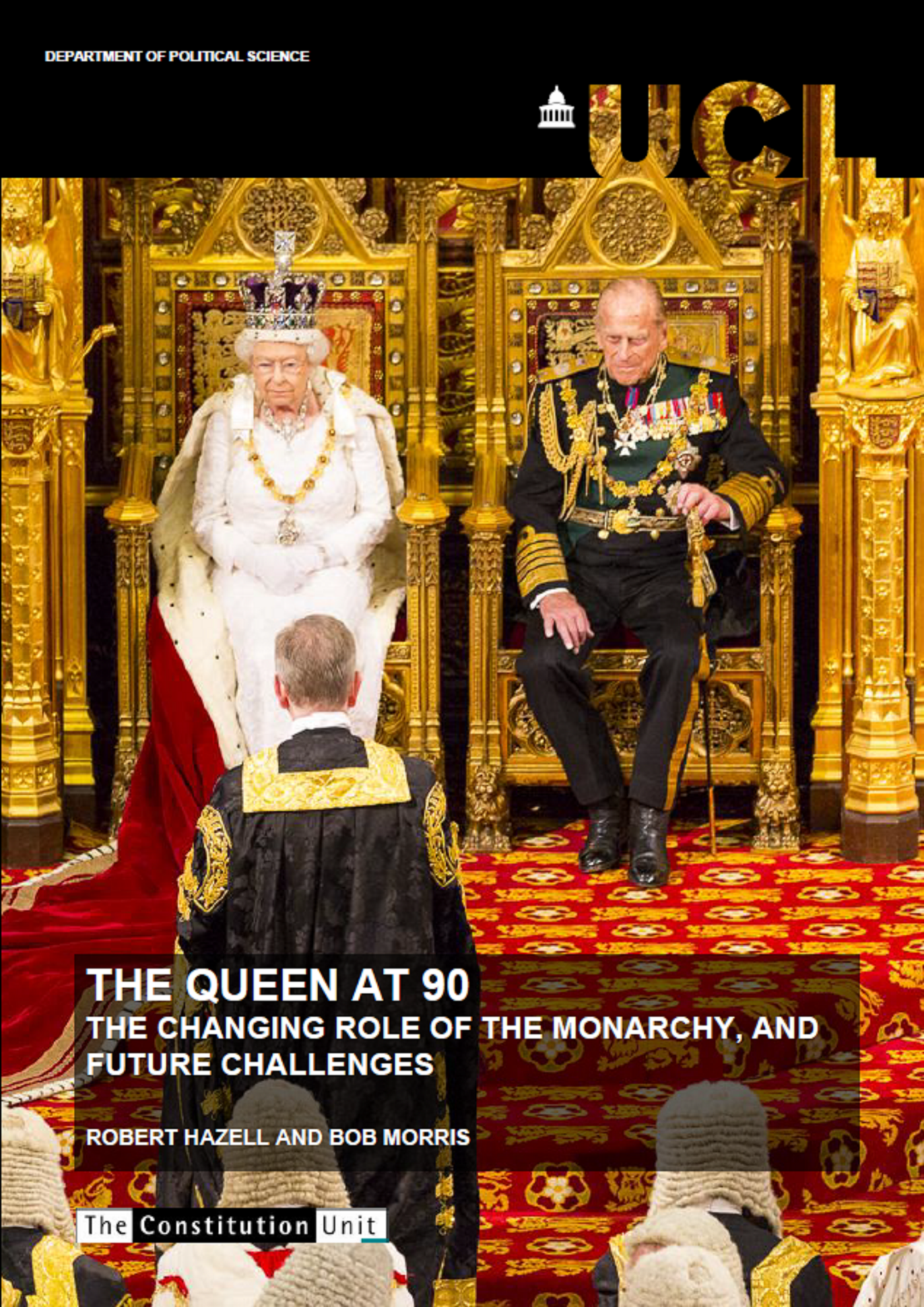A list of some of the frequently asked questions about the coronation.
- What does a coronation do?
- How old is the coronation?
- What are the main elements in the coronation?
- Is it compulsory to have a coronation?
- Will Camilla be crowned?
- Who will be invited to the coronation?
- Who plans the coronation?
- What are the Accession and Declaration Oaths?
- Has the oath been altered in the past?
- Could the King refuse to take the oath?
- Are there reasons now for altering the oath?
- What is the relation between church and state?
- What role did other faiths at the coronation play?
- Processional routes
- Why does the UK still have a coronation?
- Why have other European monarchies given up their coronations?
- Could Charles III's coronation be the last?
- Has the Archbishop of Canterbury always presided?
- What could possibly go wrong?
- Which monarchs have not been crowned?
The Coronation does not ‘make’ the monarch. Under common law, the new monarch succeeds to the throne immediately on the death of the predecessor: so, Charles became King the moment the Queen died.
The coronation has several functions. It is a religious rite that symbolises the descent of God’s grace on the new ruler. The King takes a solemn three-part oath to govern according to laws and customs; render justice with mercy; and maintain the Protestant Reformed Religion plus the rights and privileges of the Church of England. He is then anointed and crowned by the Archbishop. In sum, the Church blesses the monarch and his new reign; he in turn promises to protect the Church, and to serve his people.
In medieval times, the church was considerably larger than civil government. All rulers needed to be allied to the church. When Henry VIII rejected Rome in the English reformation, he became Supreme Governor of the Church of England, and the church became subordinate to the civil authority.
Back to top
The coronation ceremony is over 1000 years old. It was formalised in AD 973, with the coronation of the Anglo-Saxon King Edgar by St Dunstan of Canterbury in Bath Abbey. The first Norman King to be crowned in Westminster Abbey was William the Conqueror, crowned there on Christmas Day 1066. King Charles is the fortieth monarch to be crowned at the Abbey since 1066.
Back to top
What are the main elements of the coronation?
The main elements are the recognition; the oath; anointing; crowning; homage; and communion. The recognition is at the start, when the Archbishop presents – in a vestigial nod to ancient systems of election that preceded primogeniture - the new monarch to the congregation, with trumpet fanfare, and they all shout, ‘God save the King!’ The King then takes the coronation oath, and the Archbishop anoints the King with chrism (holy oil from Jerusalem). In a manner similar to an ordination, this is when the grace of God is called down upon the new monarch and his reign.
After the anointing, the monarch is crowned by the Archbishop, seated upon King Edward’s chair, used in coronations for the last 700 years. Then comes the homage, when the Archbishop, and others kneel before the King to pay homage in ancient words of fealty. Finally, there is communion: the coronation is also a eucharist, in which the monarch takes communion.
Back to top
Is it compulsory to have a coronation?
There is no law specifically requiring a coronation. William IV had to be persuaded against his will to have one in 1831. On the other hand, the existence of the Coronation Oath Act 1689 clearly expects that there should be a coronation.
Back to top
Camilla will be crowned with Queen Mary’s Crown, used at her coronation in 1911. When Queen Elizabeth died, Buckingham Palace announced that Camilla would be known as the Queen Consort. Invitations to the coronation have been issued in the names of ‘King Charles III and Queen Camilla’, so from now on she will be known as Queen Camilla. This follows the same style as previous Queen Consorts, such as Queen Mary, and Queen Elizabeth (known after the death of George VI as the Queen Mother).
Back to top
Who will be invited to the coronation?
In 1953 room was found for 8,250 guests by the erection of a large amount of scaffolded temporary seating. This time the seats available will be in the region of 2,200; the same as for the Queen’s funeral.
Selection of the guests will require heroic prioritisation. In 1953 there were over 1000 Commonwealth representatives, 850 peers from the House of Lords, and nearly 700 MPs and their wives. This time just 500 seats have been allocated for foreign guests, and limited numbers of MPs and peers will be selected by ballot.
Representatives of civil society will feature for the first time. Over 450 holders of the British Empire medal have been invited, to recognise their contribution to their local communities; and 400 young people representing charities will be able to watch the coronation and procession from St Margaret’s Church, Westminster.
Back to top
In the twentieth century, the Earl Marshal – an hereditary role falling on the Dukes of Norfolk – traditionally as before led the detailed planning for all major royal public events, assisted by the Heralds of the College of Arms. For coronations, there was a formal committee structure through which the Earl Marshal directed the planning supervised by the Cabinet.
Planning arrangements for the coming coronation appear to have been revised in a situation where the Earl Marshal’s role has been changed. In January, for example, the Cabinet Office Minister Oliver Dowden told Parliament, ‘I should say that it is His Majesty the King’s coronation and His Majesty the King, through Buckingham Palace, is responsible for the content of the coronation, the guest list and all the other things associated with the coronation’. In practice the coronation is planned jointly by the church, the new monarch and the government. The church is responsible for the liturgy at the coronation, and the Archbishop presides. The state will have views about the guest list, in particular the foreign guests. The state also pays for the coronation, and so has responsibility for the overall size and scale of the event.
Back to top
What are the Accession and Coronation oaths?
Following accession the new monarch must take three statutory oaths, which originate from the period 1688 to 1707. At that time Catholic Europe was seen as a threat to national security. In 1689 King James II was chased from the throne because he was Catholic, and William and Mary invited to assume the throne because they were Protestant. But to make doubly sure Parliament passed a law requiring them to swear that they were faithful Protestants, who would uphold the Protestant succession.
Under the Coronation Oath Act 1689 King Charles will promise to govern his people according to their laws and customs, to honour the legal settlement of the Church of England, its rights and privileges, and to uphold the Protestant religion. At the coronation he will also take the Accession Declaration oath swearing that he is a faithful Protestant, and that he will uphold and maintain the Protestant succession. At the Accession Council on 10 September 2022, the King swore the oath required under the Act of Union 1707 to preserve the Presbyterian form of church government in Scotland.
Back to top
Has the oath been altered in the past?
Because the oath is prescribed in an Act of Parliament, only another Act can change it. However, as successive Lord Chancellors explained in 1937 and 1953, there also exists a doctrine of implied repeal. This applies where other statutory changes have unavoidable consequences for the coronation oath. For example, an oath designed for England only had to be revised to reflect the Acts of Union with Scotland in 1707 and with Ireland in 1800. Later still it had to be updated following the independence of former colonies or possessions.
Back to top
Could the King refuse to take the oath?
Failing to swear incurs no penalty for any of the three oaths: the monarch would still be the monarch. There is a precedent for the King refusing. In 1910, George V told the government that he could not contemplate swearing the accession declaration required under the Bill of Rights 1689 because it was so offensive to his Roman Catholic subjects, especially though not only in Ireland.
The declaration consisted of a long diatribe against Roman Catholic doctrine. George V’s father, Edward VII, had felt the same way when he succeeded in 1901. The Asquith government resolved the situation by the Accession Declaration Act 1910 which substituted a much simpler form of words for the offensive seventeenth-century language.
Back to top
Are there reasons now for altering the oath?
Any oath like the Coronation Oath that is well over 300 years old is likely to need revising and updating. Requiring the monarch to swear ‘to preserve unto the Bishops and Clergy of England and to the Churches there committed to their charge, all such rights and privileges, as by law do or shall appertain to them’ is seen - by important opinion in the Church of England and elsewhere - as not right for Britain’s more multi-faith and more secular society.
The Constitution Unit report Swearing in the new King proposed ways in which the Accession and Coronation oaths could be updated. But any opportunity to legislate before 6 May has now passed. In the absence of amending legislation, some preambular statement might be employed to explain the historical context. This could appear in the service sheet, or be given by the King. At the Accession Council on 10 September the King prefaced the Scottish oath by saying, ‘I understand that the Law requires that I should, at My Accession to the Crown, take and subscribe the Oath relating to the Security of the Church of Scotland’.
Back to top
What is the relation between church and state?
The King is Supreme Governor of the Church of England. Formally he still appoints the Archbishops, Bishops and Deans of cathedrals on the advice of the Prime Minister. In practice they are selected by the church; since 2007 the Prime Minister chooses the first-named candidate. 26 Bishops of the Church of England have seats in the House of Lords. Until 1919 all church legislation was by Act of Parliament; legislation is now initiated by the General Synod, but it can still be overruled by parliament. The Church of England has a universal obligation: everyone has the right to be married in their local church, and to have a church funeral, whether or not they are christened, and whether or not they regularly attend church.
The Church of Scotland is also an established church, recognised by law as the official church in Scotland; but as a presbyterian church it has no Bishops. In Ireland the Anglican Church was disestablished in 1869, and in Wales in 1920.
Back to top
What role will there be for other faiths at the coronation?
In 1953 there was no role for other faiths, beyond the Moderator of the General Assembly of the Church of Scotland being allowed to present a Bible to the Queen. It is expected that more prominent roles will be found for other Christian denominations and other faiths, for example in the procession which precedes the entrance of the King. King Charles demonstrated his strong interest and support by holding a reception for faith leaders in the first week of his reign, when he said that although he was a committed Anglican, he promised to ensure that other faiths should thrive.
Back to top
A much-shortened route from the Abbey has been announced. In fact, the return procession will follow the same route as the procession to the Abbey. In 1953 the ‘From’ route was 5 miles long and passed through Pall Mall, Piccadilly, Hyde Park, and Oxford and Regent Streets. The parade, consisting of British and Commonwealth servicemen and women and over 20 military bands, took 45 minutes to pass any one point. Servicemen were brought back from postings abroad to participate and large sums were spent on equipping soldiers with No 1 Dress ceremonial uniforms.
Back to top
Why does the UK still have a coronation?
Although some of the original reasons for having a Coronation have lost their force, it retains a powerful place in peoples’ imaginations. Some of the enduring reasons for its appeal are:
- The fact that coronations in Britain go back 1000 years;
- The way it marks peaceful renewal at the apex of the constitution, and celebrates the continuity of orderly society;
- A source of national pride and celebration;
- The appeal of religious endorsement;
- A complex mixture of constitutional politics, religious spectacle and civic glamour from which all can take their own meaning.
Back to top
Why have other European monarchies given up their coronations?
The UK is now the only European monarchy that retains a coronation. The post-Napoleonic monarchies of Belgium, Luxembourg and the Netherlands have never had them. Denmark’s last coronation was in 1840: after the introduction of a democratic constitution from 1849, continuing with a coronation was regarded as incompatible with the new arrangements. Sweden’s last coronation was in 1873 and discontinued on grounds of expense. After 1905, coronations in Norway were banned by law. Though medieval kingdoms in the Spanish peninsular held coronations, there has been none on or after the unification of Castile and Aragon in 1479.
Back to top
Could Charles III's coronation be the last?
In the UK, as in the Scandinavian monarchies, a coronation is not essential to the continuation of monarchy. It follows that a situation could arise where a coronation was simply discontinued without any change in the law. The concept of a coronation oath could survive into a changed ceremony of accession – religious or secular – without crowning. In Denmark, for example, the only time the crown is put to use is on the coffin of deceased monarchs at their funeral.
Back to top
Has the Archbishop of Canterbury always presided?
No, and nor does the celebrant have to be an archbishop. Exceptions were -
- The Archbishop of York presided over William the Conqueror’s coronation on Christmas Day 1066 rather than Stigand, the Archbishop of Canterbury. Stigand had been close to Harold II’s family, the Godwins; held the sees of Canterbury and Winchester illegally in plurality and otherwise gained a reputation for prioritising his own enrichment, and was not favoured by the Papal authorities who eventually deposed him in 1170.
- Henry III was crowned twice – jointly and hurriedly nine days after the death of his father King John in 1216 by the Bishops of Worcester and Exeter. This was because of a threatening political situation during the Dauphin’s invasion; and, secondly, with full ceremony at the Abbey by the Bishop of Winchester in May 1220, both Archbishops being abroad at the time.
- The Bishop of Winchester also crowned Edward II in 1308 because the then Archbishop of Canterbury had been exiled by the King’s father, Edward I. And the Bishop of Winchester crowned Mary I in 1553 who had selected the bishop because of his Catholic sympathies.
- Elizabeth I was crowned by the Bishop of Carlisle at a time of religious uncertainty following Mary I’s death in late 1558, a vacancy at Canterbury and reluctance among or doctrinal unsuitability of other Marian bishops,.
- William III and Mary II were crowned joint monarchs by the Bishop of London in a situation where Sancroft, the Archbishop of Canterbury, could not reconcile himself to the Parliamentary deposition of James II.
Back to top
All sorts of things have gone wrong at previous coronations. At the coronation of King George IV in 1821 his estranged wife Queen Caroline tried to attend, but was refused entry; she died two weeks later. For the coronation of Queen Victoria the royal goldsmiths made the ring for the wrong finger, thinking it should go on her little finger. The Archbishop forced it onto her ring finger and Queen Victoria had to soak her hand in iced water after the ceremony. The coronation of King Edward VII had to be postponed from June to August 1902 when the King had appendicitis. At the coronation the ageing and almost blind Archbishop placed the crown on the King’s head the wrong way round.
Back to top
Which monarchs have not been crowned?
The two monarchs who did not have any coronation were Edward V and Edward VIII. Edward V (the boy king) acceded in 1483 aged 12, but reigned for only two months before being deposed by his uncle the Duke of Gloucester, who then became King Richard III; Edward was later presumed murdered in the Tower of London. Edward VIII abdicated 11 months after succeeding his father, before the date set for his coronation in May 1937; the date was subsequently used by his brother King George VI.
 Close
Close







